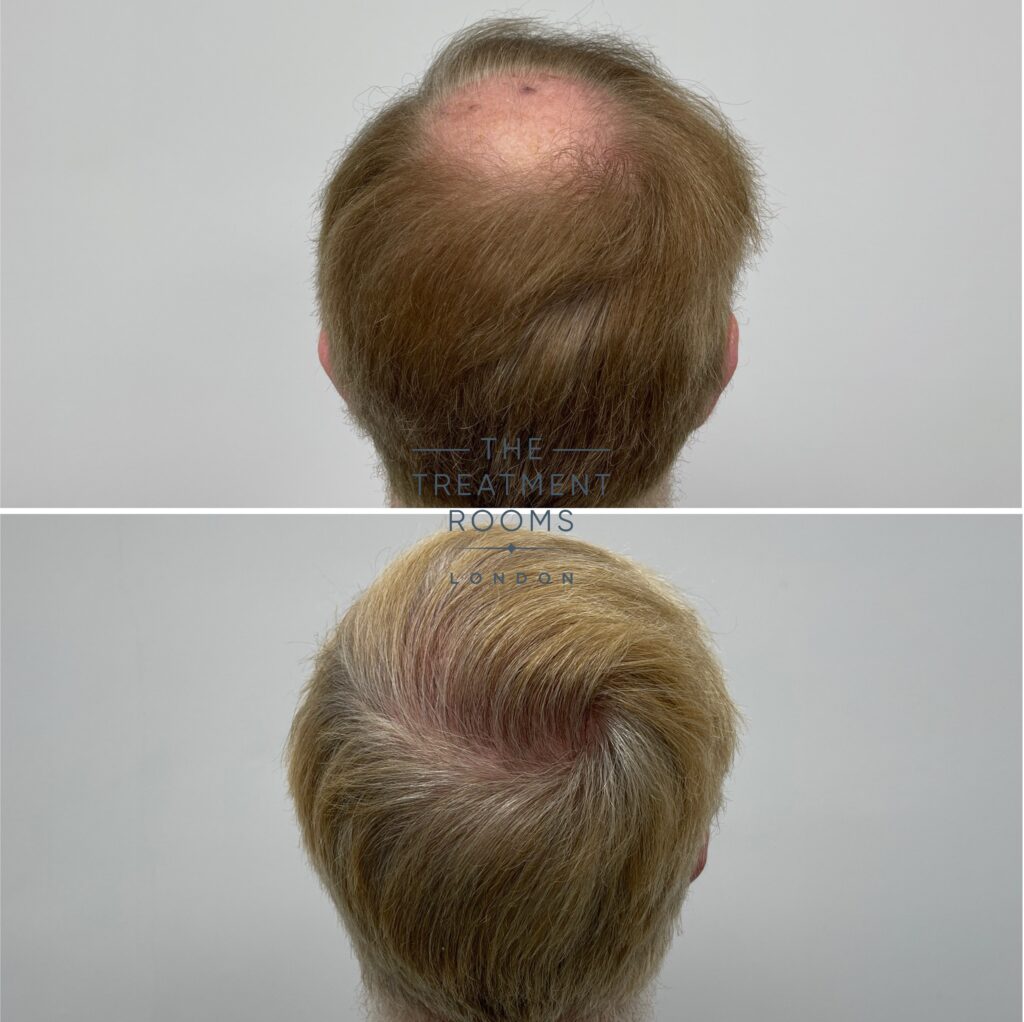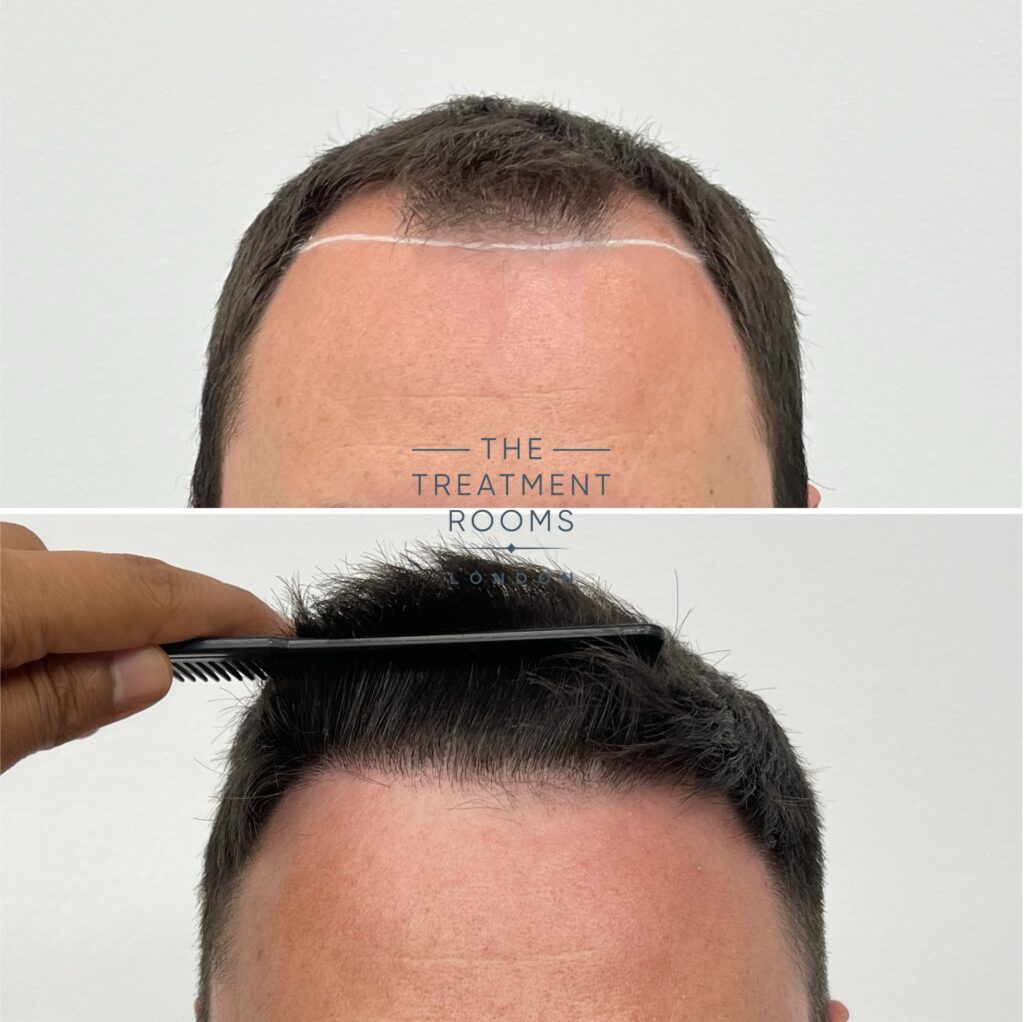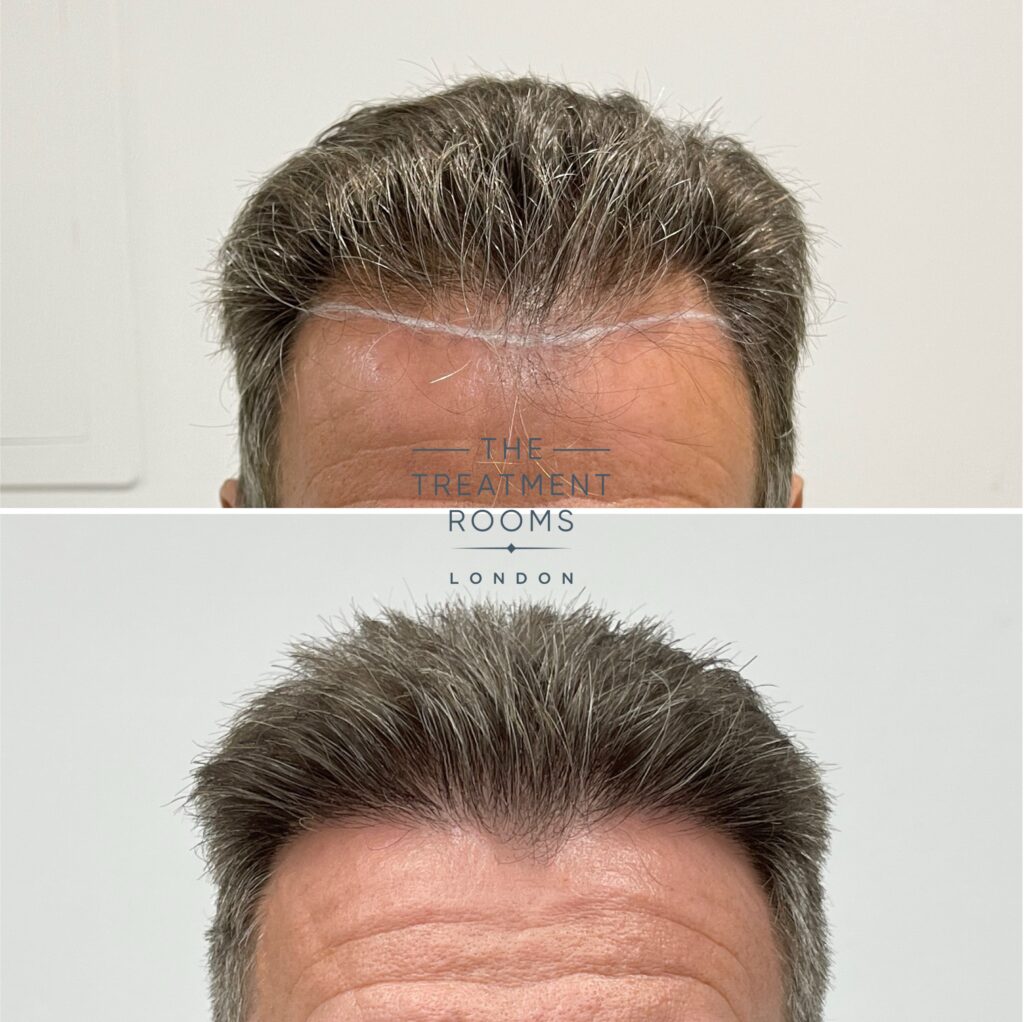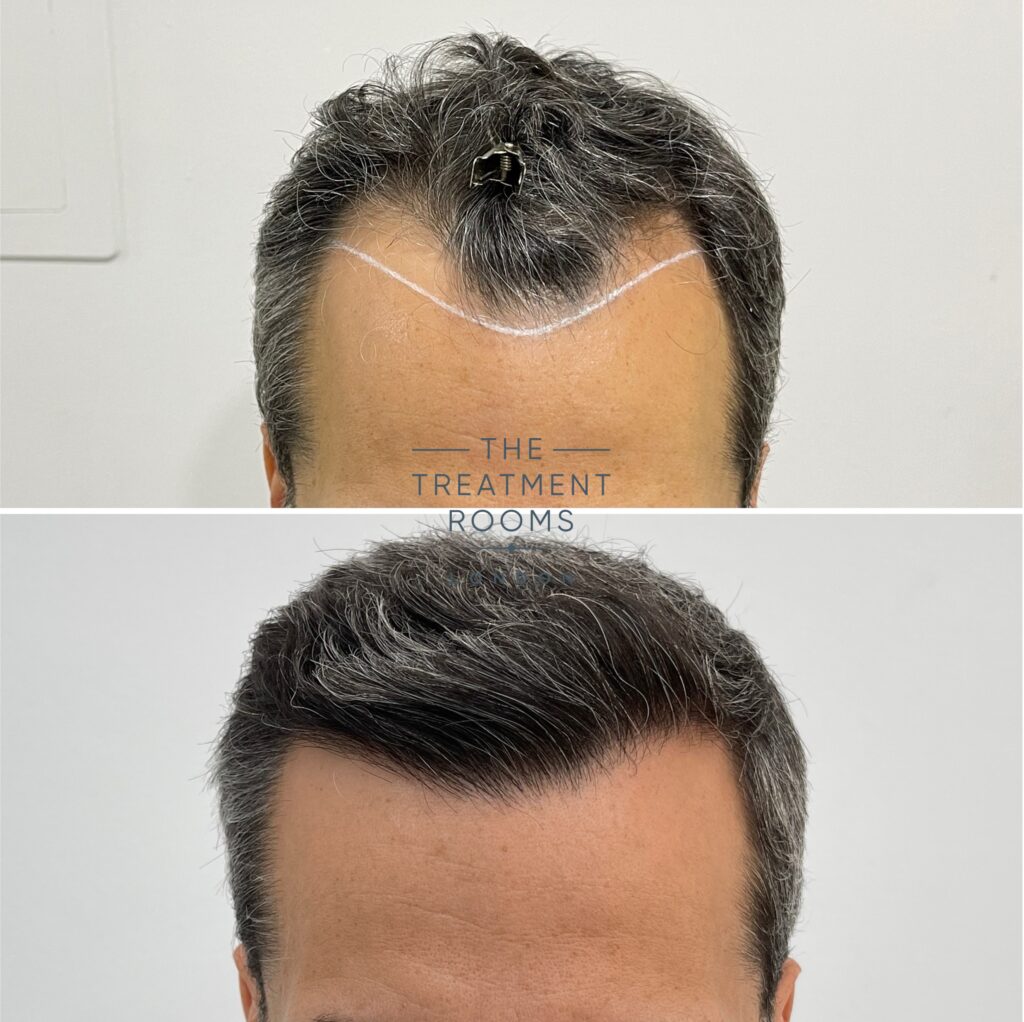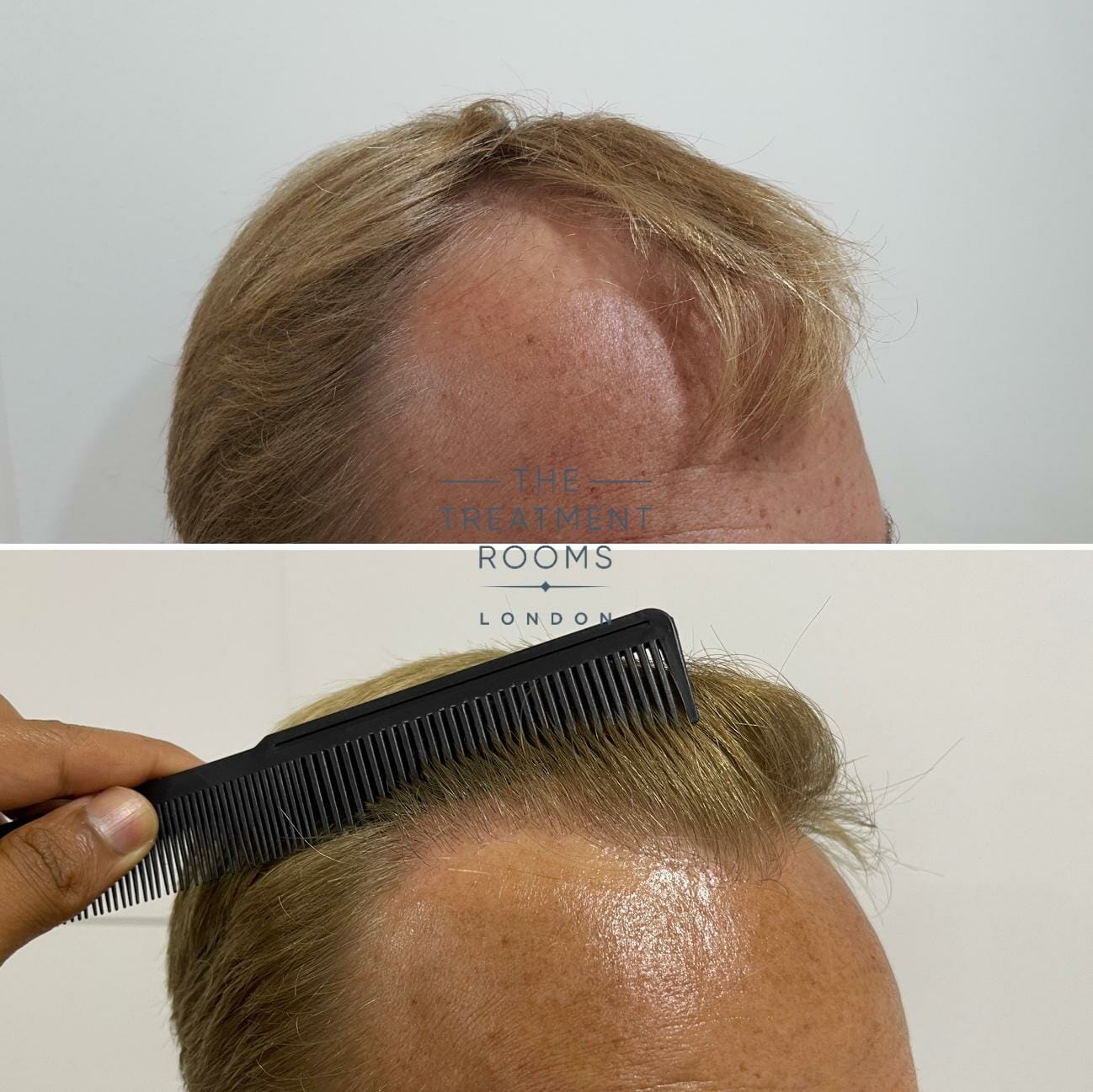
BEFORE AND AFTER HAIR TRANSPLANT RESULTS
VIEW OUR CLINIC'S BEFORE & AFTERS
Our Patient's FUE Hair Transplant: Before and After
Our mission is to provide a premium hair transplant experience built on clinical excellence and personalised care.
We are recognised for our surgeon-led approach, where every step of your treatment is managed by your dedicated doctor, ensuring you receive the highest level of attention, safety and results.
The Significance of Post-Operative Care in Results
A successful hair transplant doesn’t end as you step out of the clinic, but rather in the weeks and months as you undergo a recovery period. Post-operative care plays a significant and vital role in determining how well your scalp heals, the survival of grafts, and the overall appearance in density and naturalness.
Even the most advanced surgical procedure will not achieve the best outcome without the appropriate aftercare. That’s because newly transplanted hair follicles are delicate in the first few weeks. They need a stable, healthy environment to establish themselves and begin to grow without friction, sweating, harsh chemicals or activities that can irritate the scalp.
Proper aftercare will also help prevent potential complications, such as infection or folliculitis, and aid in managing swelling and redness, which can interfere with the quality and comfort of your recovery. The result? Quicker healing, less conspicuous scabs, and a smooth path to better regrowth.
Every one of our patients is given a comprehensive Aftercare Guide explaining what to expect during the days, weeks, and months following your surgery, including instructions on how to wash your hair, when you can start exercising, and which products to avoid using.
Timeline of Results
Week 1: Healing and Recovery
In the first 7–10 days, your scalp will be in healing mode. You may notice:
- Mild swelling or redness of the donor and recipient sites
- Formation of small scabs on the region where grafts were put on.
- Scalp sensitivity or tightness
Most of the scabs will naturally come off by the end of this phase. During this period, it is crucial that all post-operative care directions are adhered to; the grafts must not be touched, scratched, or in any way disturbed.
Months 1–3: Shedding Phase and Dormancy
This is the most unexpected and, in some cases, concerning stage to the patients.
- Around weeks 2–4, shock loss takes place: the newly transplanted hairs start falling out.
- This is completely normal and temporary.
- Beneath the surface, the follicles are alive and entering a resting phase.
Although the scalp may appear as it did before the procedure, do not panic; this is a natural part of the hair growth process.
Months 4–6: Early Regrowth Begins
You will now start noticing minor improvements.
- Fine, thin hairs start growing.
- Hair density may appear patchy at first.
- The texture can be different, softer or curlier, but this will normalise over time.
Most patients can see a visible improvement by the end of the 6th month and are motivated by their progress.
Months 9–12: Full Results and Maturation
This is when the actual change is made evident and the transformation becomes visible.
- Hair strands get thicker, fuller, darker and uniform in appearance.
- Bald or thinning areas fill in significantly.
- The hairline settles into its final shape.
You will notice the full benefits of your transplant at this stage and may cut, shape and treat your hair as you are used to.
Realistic Expectations: What a Hair Transplant Can and Can’t Do
A hair transplant can be life-changing, but it’s essential to understand what is truly possible. At our clinic, we strive to deliver natural, lasting results through honest advice and precise medical care. Here's what that means for you:
What It Can Do:
Re-grow thinning or balding areas with your own existing healthy donor hair (usually from the back or sides of the scalp).
Reframe your face by having a well-designed hairline that is appropriate to your age, bone structure, and natural hair pattern.
Give you back confidence with results that grow, blend in, and age naturally.
What It Can’t Do:
Recreate teenage-level density — there’s a limit to how many grafts can be safely taken and implanted.
Achieve extreme transformations in a single session, particularly in cases of advanced hair loss or limited donor supply.
Prevent future hair loss entirely — maintenance treatments, such as finasteride or minoxidil, may still be recommended for surrounding non-transplanted hair.
Our goal is not to promise perfection; we aim to create outcomes that appear so natural. Every procedure is always different, depending on your hair loss pattern, donor supply, and your long-term expectations.
If you’re hoping for a miracle overnight, this might not be the right solution. However, if you want a careful and long-lasting change, we’ll help you achieve just that.
Factors That Influence Final Results
Each hair transplant is unique, and your result is not only determined by the procedure itself. We are transparent about what truly drives success at our clinic, so you have a clear understanding from the outset.
1. Your Genetics and Donor Hair Quality
The density, quality and thickness of your donor hair (usually the back or sides of your head) is are essential factors. Some patients possess thick and abundant grafts, and others are restricted. The genetics also dictate how your remaining hair will age further over time.
2. Number of Grafts Available
Hair transplantation surgery redistributes existing hair — it doesn’t create new follicles. It is therefore essential to plan well, taking into account the number of grafts and where they will have the most significant impact. It is the design of the strategy that is important, rather than the raw numbers.
3. Health and Lifestyle Factors
Smoking, unhealthy diet, unmanaged health issues, and improper scalp care might delay the healing process and hair growth. A healthy lifestyle will enhance blood delivery to the scalp, leading to thicker and more lasting outcomes.
4. Surgeon Skill and Technique
The technique, artistry and experience of your surgeon can dramatically influence the outcome. Everything from hairline design to angle, depth, and placement of each graft affects how natural the final result looks. Poor technique may result in unnatural appearance and growth, scarring, or poor density.
That is why, in our clinic, we take a personalised approach, guiding you through the consultation process to evaluate these elements and plan something that fits your specific needs and long-term vision, rather than making a one-size-fits-all promise. We desire results that not only make us feel good, but safe results, that appear natural, and that pass the test of time.

